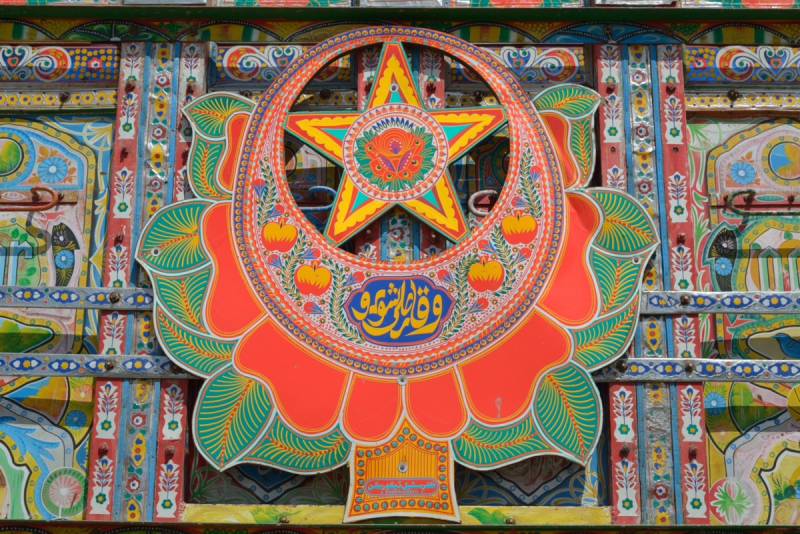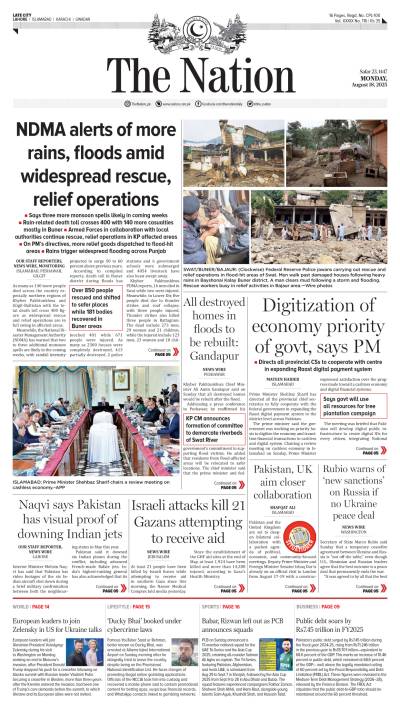Pakistan's unique and intricately attractive truck art served as an inspiration for a foreign continent - photographs of a tram in Australia went viral over the social networking websites, last year. The tram in Melbourne, Australia had a lot in common with the ornately adorned trucks of Pakistan. Trucks, called lorries in the South Asian region, are the most important means of transport in Pakistan, but they carry more than commerce. This vehicle is not just meant for going from place 'A' to place 'B'. It is also a canvas for psychedelic paintings reflecting the artist's passion and predilection. At times, the gigantic art works also serve as pieces of 'mobile poetic expressions'. However, this naïve creative potential is often ignored and longs for due recognition by the local population. Little do we know that this “miraculous art on wheels” speaks volumes about our culture and the collective mind-set of a nation, often stigmatized and labeled as an intolerant mob.
Truck artists hail from Pakistan yet their work was lauded first at international level and then at home. Sometimes, we don't just need opinions of policy experts and news headlines to explain what a country is like. There are various other ways of understanding a country. The pervasive truck culture has compelled international independent researchers to consider it as an unrivaled part of the “art economy” that serves well to get entangled into the social fabric of Pakistan as a spectator. The messages inscribed with calligraphic adroitness reflect the views of truck artists, ranging from broad subjects like politics to personal family ties. In his book, On Wings of Diesel (2011), Jamal Elias (Professor of Islamic Studies and Chair of the Department of Religious Studies, University of Pennsylvania), takes readers on a journey through the world of Pakistani truck decoration. Elias remains world's foremost expert on Pakistani truck art to date and is also a photographer who has held a number of solo and group exhibitions in the United States of America.
According to his research, the motifs on the trucks can be categorized into five groups:
- Idealized elements of life, such as the romanticized village, landscapes or beautiful women
- Elements from modern life, such as pictures of political figures or patriotic symbols
- Talismanic and fetish objects, such as horns, yak tails and items of clothing
- Talismanically or religiously loaded symbols, such as eyes and fish
- Obvious religious symbols and images, such as Buraq (a celestial horse that is believed to have carried the Prophet Muhammad on a spiritual journey to heaven)
The purpose behind his meticulous research is to ensure that people understand the richness of Pakistani society, appreciate truck art for its formidable pulchritude and to shun the notion that “countries are known by politics, not by their inhabitants”.
It is a heartening spectacle that Pakistan itself offers trivial or no recognition at all for this significant part of artisanal industry. There is an explicit order and hierarchy of values exhibited through these brightly coloured moving tapestries. These vehicles are not moving day in and day out to add gaiety to our transport, they deliver a message with each mile that they cover. These painted discourses deserve attention, appreciation and acknowledgement through a substantial recognition. Decorating trucks is a profitable business - haulage firms and lorry owners spend $5,000, even $10,000 at once to have their trucks adorned. Moreover, it can take a team of half a dozen artists and it may take nearly six weeks to just think of the design and to create the laminated stickers to be placed on the truck. The largest sector of Pakistan's art economy deserves to be seen through a positive lens as it symbolically relates to what we all share being Pakistanis.








